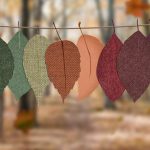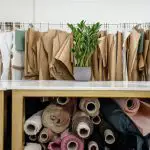When you ask what class leather falls into, it's not as simple as one might think. There are several types like full-grain, which keeps its natural texture and is super tough, or bonded leather, made from scraps and less durable. Each type, from top-grain to genuine leather, offers different benefits, depends on how it's processed, and varies in quality. Leather isn't just a one-size-fits-all; it's quite a diverse material used in everything from fashionable jackets to comfy sofas. There's plenty more to uncover about how these differences affect their use and care.
Table of Contents
Key Takeaways
- Leather is a durable and flexible material made from animal hides, primarily used in fashion and upholstery.
- It comes in various grades, including full-grain, top-grain, split-grain, genuine, and bonded, affecting quality and price.
- Full-grain leather is the highest quality, known for its durability and ability to develop a patina over time.
- Bonded leather is the lowest quality, made from leftover scraps and less durable than other types.
- Leather's uses range from clothing and accessories to furniture and car interiors, offering both functionality and aesthetic appeal.
Understanding Leather Grades
Let's dive into the different grades of leather and what makes each unique. When we talk about leather grades, it's like exploring a menu of options, each with its pros and cons. At the top of the list is full-grain leather. This stuff is the real deal—think of it as the whole wheat of leathers. It keeps all the natural surfaces intact, which means it's super durable and ages beautifully. You can spot full-grain leather by its unique textures and imperfections, which I personally think adds character.
Moving one step down, we've got top-grain leather. It's a bit like full-grain's younger sibling—still high quality but a touch more refined. Top-grain is usually sanded down to get rid of imperfections, giving it a smoother finish. It's a bit less durable than full-grain but still holds up pretty well.
Then there's split-grain leather, which is really the underdog of the group. It comes from the lower layers of the hide and is thinner and more flexible. It's often used to make suede, which is great for stuff like jackets and shoes but doesn't last as long as the top-tier grades.
Lastly, genuine leather is a broad term that covers anything that's real leather, but it varies a lot in quality. Bonded leather is at the bottom of the barrel, made from leftover scraps. It's cheaper, but trust me, it shows in how quickly it wears out. So, when you're eyeing that next leather purchase, keep these grades in mind to make a choice you won't regret.
Types of Leather Explained
Diving deeper, we'll now explore the various types of leather and what sets each apart. Let's kick things off with full-grain leather, the cream of the crop. It's known for its top-notch quality because it retains the natural grain, making it extremely durable and capable of developing a rich patina over time.
Next up is top-grain leather, which is also quite popular. It's a bit more processed, as the surface is sanded to remove imperfections. This makes it smoother and more uniform, but it doesn't age quite as gracefully as full-grain.
Then, we've got split-grain leather. This type is more flexible and is often used to make suede. It's the bottom layer of the hide, so while it's real leather, it doesn't boast the same strength or durability.
Lastly, there's bonded leather. Think of it as the hotdog of the leather world—it's made from genuine leather scraps mixed with synthetic materials. It's the least durable and tends to peel or break easily.
Here's a quick table to sum up:
| Type | Durability |
|---|---|
| Full-grain | Most durable |
| Top-grain | Moderately durable |
| Split-grain | Less durable |
| Bonded | Least durable |
Benefits of Different Leathers
When we look at different types of leather, it's clear they're not all created equal. I'll start by talking about how durable these materials are, because let's face it, we all want something that lasts.
Next, I'll touch on the aesthetic appeal of each leather type, which is crucial when you're deciding what looks best for your gear.
Durability of Leathers
In terms of durability, full-grain leather tops the chart as the most enduring type. If you're looking for something that'll last for ages and can handle a bit of rough and tumble, this is your go-to. Full grain isn't just tough; it actually looks better as it ages, gaining character with every scratch and bend.
- Resists wear and tear: Full-grain leather can withstand heavy use without falling apart.
- Age beautifully: Develops a unique patina over time, enhancing its aesthetic value.
- Low maintenance: It's naturally resistant to dirt and stains.
- Strength: Holds up against harsh conditions, making it ideal for high-quality furniture and footwear.
Knowing these perks, it's clear why full grain stands out!
Leather Aesthetic Appeal
Leather's aesthetic appeal varies greatly from one type to another, offering unique benefits and characteristics that enhance its use in various products.
For example, full-grain leather stands out with its luxurious, smooth surface and minimal flaws. It's perfect for high-end footwear and fancy furniture because it ages beautifully, developing a patina that acts like a natural protector.
Top-grain leather, a step down in rank, is thinner and more pliable. It's got a smoother finish and is a bit more wallet-friendly while still offering good durability and stain resistance.
Then there's genuine leather—super common and affordable but don't expect it to last forever.
And corrected-grain? It's the fixer-upper of leathers, sanded down and pigmented to hide its sins.
Common Uses of Leather
Leather's remarkable versatility makes it a top choice for items ranging from stylish jackets to durable shoes. I've always been amazed at how leather manages to be both trendy and tough, making it ideal for everyday use and high-end fashion. It's not just about looking good; leather's durability means that items like boots and belts can take a beating and still last for years.
Let's dive a bit deeper into some of the common uses:
- Clothing: From the rugged appeal of leather jackets to the chic touch of leather skirts, it's a staple in fashion.
- Accessories: Leather wallets, belts, and watch straps aren't just functional; they add a layer of sophistication to any outfit.
- Furniture and Interiors: Leather sofas and car seats bring a luxurious feel and longevity that fabric can't match.
- Footwear: Durable leather shoes aren't only stylish but built to endure.
When I think about various types of leather used in these products, I realize it's crucial to choose the right kind for the specific application to ensure both aesthetic appeal and longevity. Whether it's full-grain for furniture or softer suede for clothing, each type plays a crucial role in the product's life and performance.
Leather Care and Maintenance
Taking care of leather isn't just about making it look good; it's about preserving its quality for years to come.
I'll show you the best ways to clean, condition, and store your leather goods to keep them in top shape.
From choosing the right products to understanding the do's and don'ts of leather care, it's simpler than you might think.
Cleaning Techniques for Leather
To keep your leather looking great, start by using a cleaner specifically designed for leather to effectively remove dirt and grime. It's crucial, especially if you're dealing with quality leather that you want to last.
Here's how I make sure my leather stays in tip-top shape:
- Spot Test First: Always test on a small, hidden area before applying it all over.
- Use the Right Tools: Soft cloths or a gentle brush can prevent damage during cleaning.
- Avoid Harsh Chemicals: Stick to cleaners made for leather; harsh chemicals can ruin it.
- Proper Storage: After cleaning, store your leather items in a cool, dry place away from sunlight.
These simple steps have kept my leather goods looking fabulous for years!
Conditioning Leather Items
After cleaning your leather, it's important to condition it to keep it soft and prevent cracks. Regular conditioning stops your genuine leather items from drying out and cracking, which can really ruin their look and feel. You want to use a conditioner that's right for the type of leather you have.
This step replenishes the leather's natural oils, keeps it flexible, and adds a layer of protection against water and stains. If I skip this, my leather goods just don't last as long or look as good.
Storing Leather Properly
Proper storage of your leather items is crucial for maintaining their quality and longevity. Here's how I make sure my leather stays in top shape:
- Keep it cool and dry: I always store my leather away from direct sunlight and heat sources. This prevents fading and drying out.
- Skip the plastic: I never use plastic bags for storage. Instead, I opt for a breathable fabric or cotton dust bag to allow airflow and avoid moisture buildup.
- Apply leather conditioners: Before storing, I treat my items with leather conditioners to keep the material supple and prevent cracks.
- Stay away from heat: I make sure to keep leather away from radiators or heaters to dodge any damage.
Leather in Fashion Industry
Leather dominates the fashion industry, featuring prominently in everything from high-end jackets to stylish boots. It's the go-to for anyone looking to add a touch of class and durability to their wardrobe. I'm constantly amazed by how versatile leather is, whether it's in the form of an elegant jacket, a rugged pair of boots, or chic accessories. The types of leather items you can find are virtually endless.
Let's dive into some popular leather types used in fashion:
| Type | Common Use | Appearance |
|---|---|---|
| Full-grain | High-end jackets | Rich, natural texture |
| Top-grain | Trendy handbags | Smooth, durable |
| Suede | Casual footwear | Soft, velvety |
| Patent | Fashionable belts | Glossy, sleek |
| Nubuck | Stylish boots | Buffed, soft matte |
Each type brings something unique to the table, influencing both the style and function of the item. Full-grain, for instance, is incredibly robust, making it perfect for a jacket that not only looks good but lasts. Meanwhile, suede offers that soft, luxurious feel that's perfect for comfortable yet fashionable shoes.
I love how leather's timeless appeal makes it a staple in fashion. Whether it's the sleekness of patent leather belts or the rugged charm of nubuck boots, leather's versatility is unmatched in the fashion world.
Environmental Impact of Leather
Despite its popularity in fashion, the production of leather has significant environmental consequences. I've been digging into how our love for products like top-grain leather impacts our planet, and honestly, the facts are pretty startling. Here's a quick rundown:
- Deforestation: Huge areas of forest are cleared to create grazing land for the cattle that provide the leather. This results in loss of biodiversity and increases greenhouse gases, which isn't great for climate change.
- Water Usage: It takes a lot of water to produce leather, folks. We're talking about large quantities used in the soaking and tanning processes, which could otherwise support whole communities or natural ecosystems.
- Toxic Chemicals: The tanning process involves chemicals that can be harmful. These chemicals can contaminate our waterways, affecting wildlife and human health.
- Waste Issues: After all is said and done, there's still the problem of leather scraps and old leather goods. These often end up in landfills, causing further environmental degradation.
It's clear that the leather industry needs a serious overhaul if we're going to reduce its environmental footprint. And knowing these impacts, I feel like it's time we demand more sustainable practices.
Future Trends in Leather Use
Looking ahead, the future of leather use is rapidly evolving with exciting sustainable innovations. It's clear that the industry is pivoting towards methods that significantly reduce its environmental footprint. Innovations like lab-grown leather and biodegradable alternatives aren't just buzzwords; they're real solutions gaining traction. These technologies are crucial as they offer the same quality and aesthetic of traditional leather without the harsh environmental impact.
Moreover, the diversification of leather sources is something I'm genuinely excited about. Materials like pineapple leather and mushroom leather are becoming more popular. They're not only sustainable but also open up new aesthetic possibilities for designers. This shift is driven by consumer demand for more ethical and transparent supply chains. People want to know where their products come from and that they're produced responsibly.
Collaborations between fashion brands and tech companies are also shaping the future. These partnerships are pushing the boundaries of what's possible, creating cutting-edge leather goods that meet modern needs while respecting our planet. It's a thrilling time to be part of this industry, watching traditional craftsmanship merge with innovative sustainable practices.
Frequently Asked Questions
What Is Leather Category?
I'm trying to figure out leather's category. It's grouped in Class 18, which includes items like handbags and travel goods but excludes clothing and footwear. This class is unique to leather and similar materials.
What Classifies Leather?
The question's about identifying where leather fits in classification systems. It's generally placed in Trademark Class 18, covering items like bags and wallets, but not clothing or footwear, which are in Class 25.
What Is the Highest Class of Leather?
The highest class of leather is full-grain leather. It's super durable and looks better with age, making it perfect for top-notch products like fancy boots and luxury couches. Definitely worth its cost!
What Is Leather Class1?
I'm not sure what "leather class1" specifically refers to, as leather classifications typically don't use a "class1" system. They're usually graded by quality and type, such as full-grain, top-grain, or genuine leather.
- Does Chiffon Fabric Stink - July 15, 2025
- Does Chiffon Fabric Affect the Economy - July 15, 2025
- Does Cotton Fabric Have a Nap - July 15, 2025







